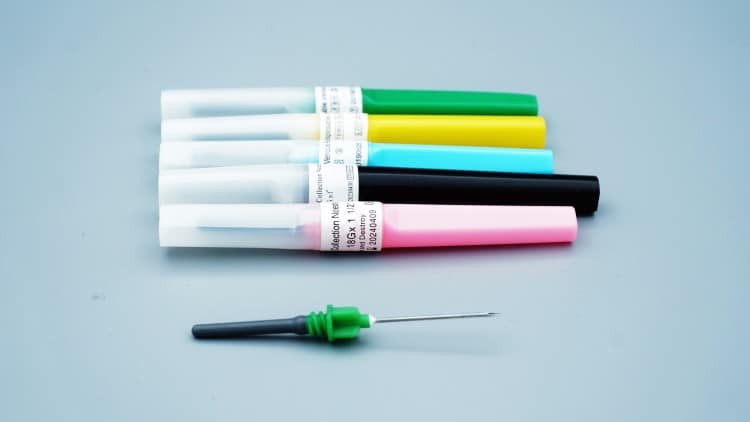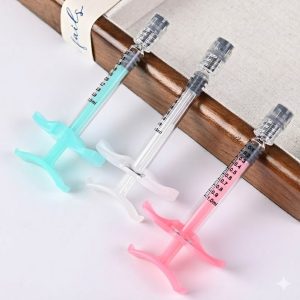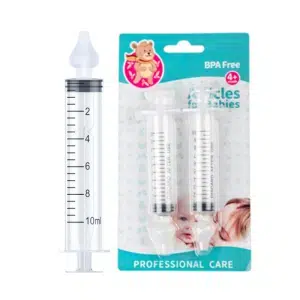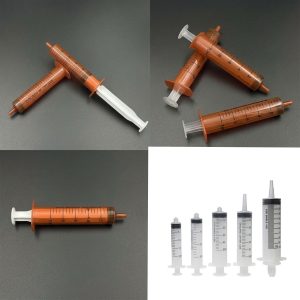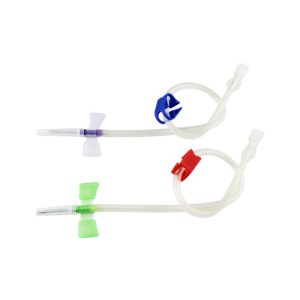In modern healthcare practice, blood collection represents one of the most frequently performed diagnostic procedures, conducted millions of times daily worldwide. However, behind these seemingly routine blood collection operations lie sophisticated technical requirements and stringent safety protocols. Mastering proper blood collection needle techniques is essential not only for ensuring diagnostic accuracy but also directly impacts both patient safety and healthcare professional occupational health.
The Critical Importance of Proper Blood Collection Needle Techniques
Foundation of Patient Safety
The standardization of blood collection needle procedures directly determines patient safety outcomes. Professional blood collection needle techniques minimize patient discomfort and clinical risks to the greatest extent possible. According to World Health Organization statistics, approximately 1.6 million healthcare-associated infections occur annually worldwide due to unsafe injection and blood collection procedures, with a significant proportion attributed to improper blood collection needle utilization.
Diagnostic Accuracy Assurance
Incorrect blood collection needle techniques directly compromise blood sample quality. High-quality blood collection needles combined with proper operational methods ensure specimen integrity and accuracy, providing reliable data for clinical diagnosis and patient care decisions.
Healthcare Worker Occupational Protection
Healthcare professionals face significant occupational risks of needlestick injuries when using blood collection needles. CDC data indicates that healthcare workers experience approximately 600,000 needlestick injury incidents annually, with blood collection needle operations accounting for a substantial proportion. Proper blood collection needle techniques can significantly reduce these occupational hazards.
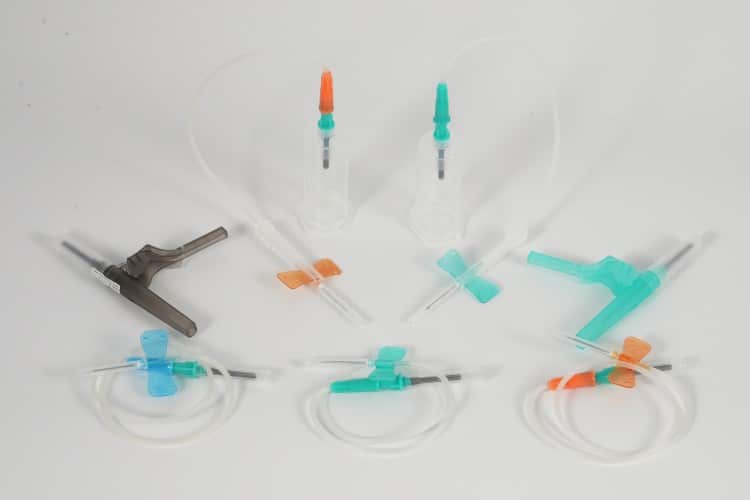
Potential Hazards from Improper Blood Collection Needle Use
Patient-Related Complications
1. Physical Injuries
- Vascular rupture causing subcutaneous bleeding and hematoma formation
- Nerve damage resulting in limb numbness or functional impairment
- Arterial mispuncture leading to severe hemorrhaging and compressive hematomas
- Repeated punctures causing vascular sclerosis and scar tissue formation
2. Infectious Complications
- Local infection at puncture sites, manifesting as erythema, edema, hyperthermia, and pain
- Phlebitis occurrence, causing vascular inflammation and patient discomfort
- Severe cases may progress to septicemia and other systemic infections
- Cross-contamination risks, particularly bloodborne pathogen transmission
3. Psychological Trauma
- Psychological impact from pain and procedural anxiety
- Vasovagal reactions causing syncope episodes
- Resistance to subsequent medical procedures
- Diminished confidence in healthcare institutions
Healthcare Professional Complications
1. Occupational Exposure Risks
- Blood collection needle injuries potentially causing HIV, hepatitis B, hepatitis C, and other bloodborne pathogen infections
- Risk of skin and mucous membrane contact with contaminated blood products
- Long-term occupational exposure potentially affecting physical and mental health
- Legal liability risks from procedural errors
2. Work Efficiency Impact
- Procedural failures requiring repeat punctures, increasing workload demands
- Managing complications consumes additional time and resources
- Patient complaints affecting work morale and professional reputation
- Medical disputes potentially impacting career advancement
Healthcare Institution Consequences
1. Medical Quality Issues
- Poor specimen quality affecting diagnostic accuracy
- Increased medical malpractice liability from misdiagnosis and missed diagnoses
- Adverse medical events damaging institutional reputation
- Regulatory penalties and mandatory corrective action requirements
2. Economic Losses
- Legal costs for handling medical malpractice claims
- Additional expenses for subsequent patient treatments
- Post-exposure prophylaxis costs for healthcare workers
- Patient attrition due to quality concerns
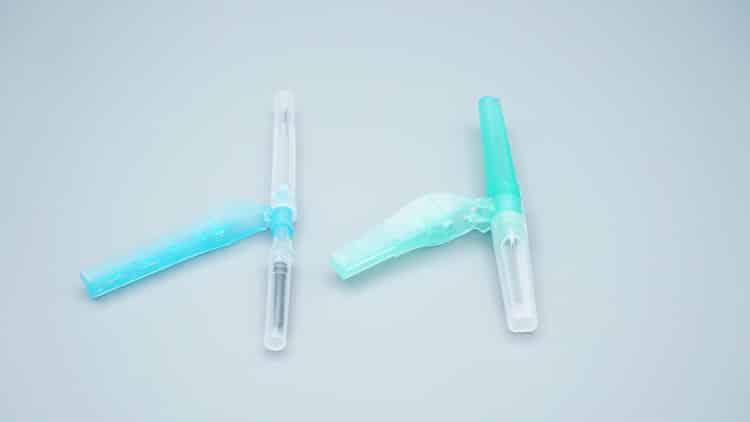
Core Elements of Proper Blood Collection Needle Techniques
1. Blood Collection Needle Equipment Selection and Preparation
Blood Collection Needle Gauge Selection
- Adult routine blood collection: Select 21-23 gauge blood collection needles (inner diameter 0.6-0.8mm)
- Pediatric patients or small vessel access: Select 23-25 gauge blood collection needles
- High-volume collection or high blood viscosity: Select 20-21 gauge blood collection needles
Blood Collection Needle System Assembly
- Ensure secure connection between blood collection needle and collection device
- Verify vacuum collection tube expiration dates and integrity
- Select appropriate anticoagulant tubes according to laboratory test requirements
2. Pre-procedure Assessment and Preparation
Patient Assessment
- Inquire about allergy history, vasovagal episodes, and previous blood collection difficulties
- Evaluate vascular conditions and select optimal venipuncture sites
- Explain blood collection needle procedure to patients and obtain cooperation
Environmental Preparation
- Ensure adequate lighting conditions for blood collection procedures
- Prepare necessary emergency supplies
- Maintain clean and organized work surfaces
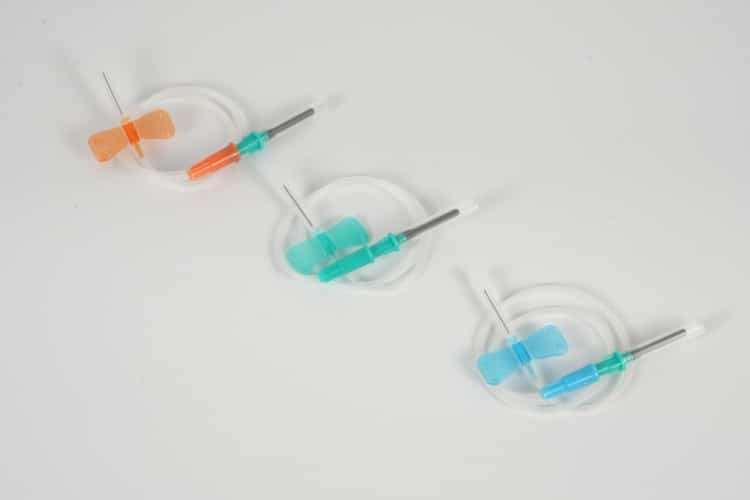
3. Blood Collection Needle Standard Operating Procedures
Step One: Hand Hygiene and Personal Protective Equipment Strictly follow WHO five-step hand hygiene protocol and don disposable gloves. Research demonstrates that standardized hand hygiene reduces healthcare-associated infection risks by 40-50%.
Step Two: Vascular Selection and Localization
- Prioritize antecubital veins (basilic vein, cephalic vein, median cubital vein)
- Avoid sites near joints, scarred areas, or infected regions
- Light percussion or warm compresses can enhance vascular filling
Step Three: Skin Antisepsis Utilize 75% isopropyl alcohol or povidone-iodine in outward spiral motions, maintaining antiseptic coverage diameter of at least 5cm, allowing natural drying for 30+ seconds.
Step Four: Blood Collection Needle Standard Venipuncture
- Stabilize skin tension with blood collection needle bevel positioned upward
- Insert at 15-30 degree angle with swift, confident motion
- Upon observing blood return, adjust angle appropriately and advance along vascular pathway
Step Five: Specimen Collection
- Avoid excessive compression of puncture site during blood collection
- Collect accurate volumes according to collection tube label requirements
- Anticoagulated specimens require gentle inversion mixing 5-8 times
Step Six: Safe Blood Collection Needle Removal
- Release tourniquet before blood collection needle withdrawal
- Immediately apply pressure with sterile gauze for hemostasis
- Dispose of used blood collection needle in designated sharps container
4. Special Situation Blood Collection Needle Techniques
Patients with Compromised Vascular Access
- Consider dorsal hand veins or pedal venous access
- Utilize smaller gauge blood collection needles and reduced-volume collection tubes
- Employ vascular imaging devices for enhanced vessel localization when necessary
Pediatric Blood Collection Needle Applications
- Implement butterfly-style blood collection needles for enhanced precision
- Consider fingerstick or heel stick capillary blood collection methods
- Require parental assistance for patient stabilization and anxiety reduction
Geriatric Patient Blood Collection Needle Procedures
- Exercise increased gentleness due to fragile skin integrity
- Adjust insertion angles for reduced vascular elasticity
- Extended compression duration may be necessary due to potential coagulation abnormalities
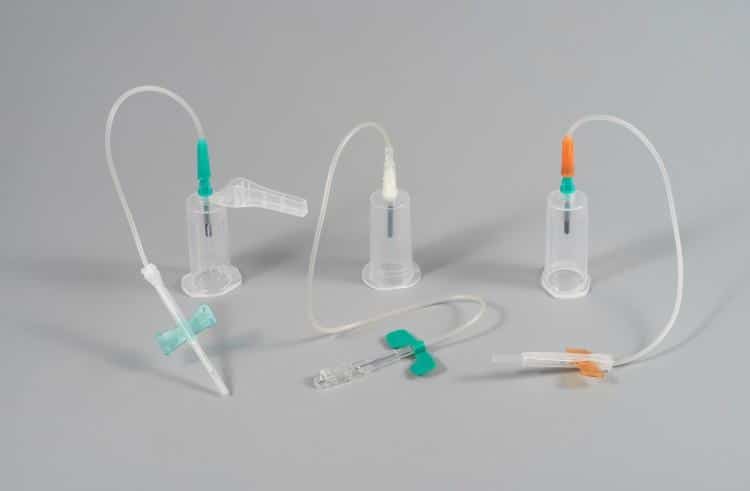
Quality Control and Continuous Improvement
Standardized Process Development
Healthcare facilities should establish comprehensive blood collection needle Standard Operating Procedures (SOPs), including:
- Blood collection needle equipment utilization standards
- Detailed procedural step documentation
- Emergency situation management protocols
- Quality control checkpoint establishment
Regular Training and Competency Assessment
- New employees must successfully complete blood collection needle theoretical examinations and practical competency evaluations
- Annual skills update training for current staff
- Adverse event reporting and analysis system implementation
- Best practice sharing and peer learning initiatives
Technology Innovation Applications
Modern medical technology advancements provide new possibilities for blood collection needle procedures:
- Vascular imaging devices improve venipuncture success rates
- Safety-engineered blood collection needles reduce needlestick injury risks
- Automated blood collection systems enhance standardization levels
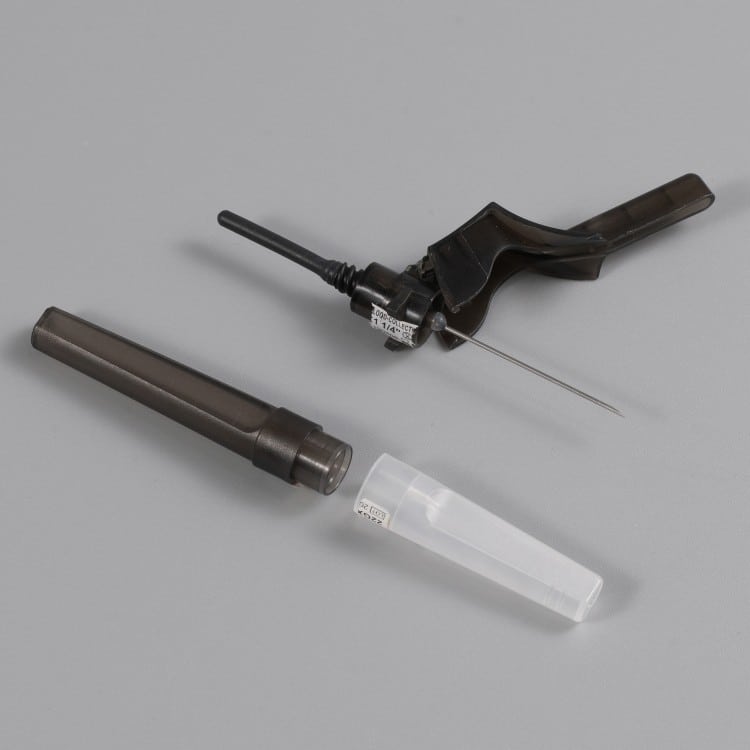
Kohope: Your Trusted Professional Blood Collection Needle Supplier
In the medical device industry, selecting premium-quality blood collection needles is crucial for ensuring medical safety and optimal patient care outcomes. Kohope, as a leading medical device manufacturer, specializes in research and development, production, and global distribution of medical blood collection needles and healthcare consumables. We are committed to providing safe, reliable, and superior-quality blood collection needle products to healthcare institutions worldwide.
Product Quality Assurance
Global Manufacturing Standards Compliance Kohope blood collection needles are manufactured in strict accordance with international standards including European CE marking requirements, US FDA regulations, and ISO 13485 medical device quality management systems. Our manufacturing facilities are designed to meet rigorous export standards for European, American, and global markets. Every blood collection needle undergoes comprehensive quality control from raw material procurement to final product delivery, ensuring compliance with international medical device safety standards.
Advanced Manufacturing Excellence Our state-of-the-art automated production lines guarantee consistency and stability of blood collection needle products. Precision engineering ensures optimal sharpness and durability of our medical needles. Advanced silicone coating technology makes blood collection needle penetration smoother, significantly reducing patient discomfort during venipuncture procedures.
Comprehensive Product Portfolio Kohope offers a complete range of blood collection needle solutions, including:
- Disposable blood collection needles (18G-27G various specifications)
- Safety blood collection needles (with integrated safety mechanisms)
- Butterfly blood collection needles (ideal for pediatric and difficult vascular access)
- Vacuum blood collection needle combination sets
- Specialized blood collection needles (including arterial collection needles)
Innovation & Technology Advantages
Ergonomic Design Excellence Kohope blood collection needles feature advanced ergonomic design with comfortable, non-slip handles for enhanced operational convenience. Our needle tips utilize proprietary tri-bevel cutting technology, minimizing penetration resistance and tissue trauma while maximizing patient comfort during blood collection procedures.
Advanced Safety Features Addressing healthcare workers’ occupational safety needs, Kohope has developed multiple safety blood collection needle products. Our innovative auto-retractable safety mechanisms and push-button safety devices effectively prevent accidental needlestick injuries, providing comprehensive protection for healthcare professionals.
Environmental Sustainability Manufactured using eco-friendly materials with recyclable packaging, demonstrating our corporate social responsibility. We also provide blood collection needle disposal and recycling solutions, helping healthcare facilities achieve sustainable medical practices.
Comprehensive Service Support
Professional Technical Excellence Kohope maintains a specialized technical team providing blood collection needle training, technical consultation, and educational services. We regularly conduct venipuncture technique training programs to enhance healthcare professionals’ clinical skills and blood collection proficiency.
Global Supply Chain Excellence Our established worldwide sales network and logistics system ensure timely product delivery. We offer flexible ordering options and rapid fulfillment services to meet diverse customer requirements across international markets.
Dedicated Customer Care We maintain comprehensive customer database management systems with regular follow-ups to monitor product performance. Our 24/7 customer service hotline provides immediate response to customer inquiries and feedback regarding blood collection needle products.
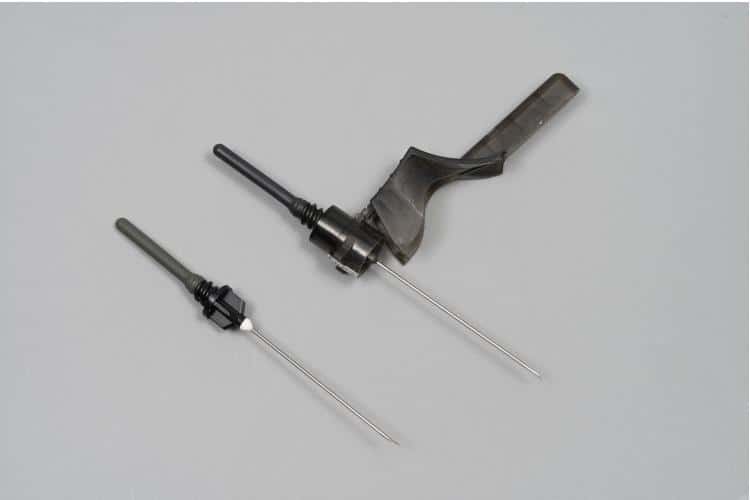
Conclusion
Mastering proper medical blood collection needle techniques represents fundamental professional competency for every healthcare provider. These skills not only relate to patient safety and diagnostic quality but also reflect the professional standards and management capabilities of healthcare institutions. Through continuous learning, training, and improvement, combined with premium-quality blood collection needle products, we can transform seemingly simple procedures into truly professional and precise medical interventions.
In today’s healthcare environment where medical safety receives unprecedented attention, we must recognize that no medical procedure should be taken lightly. Selecting Kohope’s premium blood collection needle products and strictly adhering to standard operating procedures enables us to truly fulfill the fundamental medical ethical requirement of “First, do no harm.”
Proper blood collection needle techniques represent important demonstrations of healthcare professionals’ clinical competency and concrete actions demonstrating responsibility for patient health and wellbeing. Let us partner with Kohope to collectively enhance blood collection technical proficiency and provide safer, higher-quality medical services to our patients.

